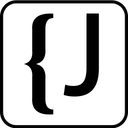
在处理外部api或服务返回的json数据时,我们经常会遇到某些字段的键名不是固定的情况。例如,一个商品可能包含多种尺寸的图片,而这些尺寸(如"50x100"、"200x300")作为json对象的键名出现,且其数量和具体值可能因商品而异。传统的go结构体要求字段名是预先确定的,这使得直接将这些动态键映射到固定字段变得不可行。
考虑以下JSON结构示例:
{
"items": [
{
"name": "thing",
"image_urls": {
"50x100": [
{ "url": "http://site.com/images/1/50x100.jpg", "width": 50, "height": 100 },
{ "url": "http://site.com/images/2/50x100.jpg", "width": 50, "height": 100 }
],
"200x300": [
{ "url": "http://site.com/images/1/200x300.jpg", "width": 200, "height": 300 }
],
"400x520": [
{ "url": "http://site.com/images/1/400x520.jpg", "width": 400, "height": 520 }
]
}
}
]
}在这个例子中,image_urls字段是一个JSON对象,它的键(如"50x100"、"200x300"、"400x520")代表图片尺寸,这些键是动态变化的。每个键对应的值是一个包含ImageURL结构体的数组。如果尝试为每个可能的尺寸创建一个结构体字段,将导致代码冗余且难以维护。
Go语言提供了一个优雅的解决方案来处理这种动态键值:使用 map 类型。当JSON对象的键是动态的,而其值类型是固定的时,我们可以将该JSON对象映射到一个Go的 map[string]ValueType 类型。
对于上述image_urls的场景,其键是字符串(如"50x100"),值是一个ImageURL结构体数组。因此,我们可以将image_urls映射到map[string][]ImageURL。
立即学习“go语言免费学习笔记(深入)”;
首先,我们定义JSON中最内层的固定结构ImageURL:
// ImageURL 定义单个图片的URL、宽度和高度
type ImageURL struct {
URL string `json:"url"`
Width int `json:"width"`
Height int `json:"height"`
}接下来,处理动态键的image_urls部分。我们创建一个自定义类型ImageSizeMap来表示map[string][]ImageURL:

Easily find JSON paths within JSON objects using our intuitive Json Path Finder
 30
30

// ImageSizeMap 定义动态键值的图片尺寸映射 // 键是尺寸字符串 (如 "50x100"), 值是该尺寸下的一组 ImageURL type ImageSizeMap map[string][]ImageURL
然后,定义包含name和image_urls的Item结构体:
// Item 定义单个商品项
type Item struct {
Name string `json:"name"`
ImageURLs ImageSizeMap `json:"image_urls"` // 使用 ImageSizeMap 处理动态键
}最后,定义整个JSON响应的最外层结构Response:
// Response 定义整个JSON响应结构
type Response struct {
Items []Item `json:"items"`
}通过这种方式,ImageURLs字段能够灵活地存储任意数量和名称的尺寸键及其对应的图片列表。
下面是完整的Go代码示例,展示如何使用上述结构体来解析带有动态键值的JSON数据:
package main
import (
"encoding/json"
"fmt"
"log"
)
// ImageURL 定义单个图片的URL、宽度和高度
type ImageURL struct {
URL string `json:"url"`
Width int `json:"width"`
Height int `json:"height"`
}
// ImageSizeMap 定义动态键值的图片尺寸映射
// 键是尺寸字符串 (如 "50x100"), 值是该尺寸下的一组 ImageURL
type ImageSizeMap map[string][]ImageURL
// Item 定义单个商品项
type Item struct {
Name string `json:"name"`
ImageURLs ImageSizeMap `json:"image_urls"` // 使用 ImageSizeMap 处理动态键
}
// Response 定义整个JSON响应结构
type Response struct {
Items []Item `json:"items"`
}
func main() {
jsonInput := `{
"items": [
{
"name": "thing",
"image_urls": {
"50x100": [
{ "url": "http://site.com/images/1/50x100.jpg", "width": 50, "height": 100 },
{ "url": "http://site.com/images/2/50x100.jpg", "width": 50, "height": 100 }
],
"200x300": [
{ "url": "http://site.com/images/1/200x300.jpg", "width": 200, "height": 300 }
],
"400x520": [
{ "url": "http://site.com/images/1/400x520.jpg", "width": 400, "height": 520 }
]
}
}
]
}`
var resp Response
err := json.Unmarshal([]byte(jsonInput), &resp)
if err != nil {
log.Fatalf("JSON unmarshal error: %v", err)
}
fmt.Println("成功解析JSON数据:")
for i, item := range resp.Items {
fmt.Printf(" Item %d: %s\n", i+1, item.Name)
fmt.Println(" 图片URLS:")
for size, urls := range item.ImageURLs { // 遍历动态尺寸键
fmt.Printf(" 尺寸 %s:\n", size)
for j, img := range urls {
fmt.Printf(" 图片 %d: URL=%s, 宽度=%d, 高度=%d\n", j+1, img.URL, img.Width, img.Height)
}
}
}
// 访问特定尺寸的图片
if len(resp.Items) > 0 {
firstItem := resp.Items[0]
if urls50x100, ok := firstItem.ImageURLs["50x100"]; ok { // 通过键名直接访问
fmt.Printf("\n第一个商品的50x100尺寸图片数量: %d\n", len(urls50x100))
for _, img := range urls50x100 {
fmt.Printf(" - URL: %s\n", img.URL)
}
} else {
fmt.Println("\n第一个商品没有50x100尺寸的图片。")
}
}
}运行上述代码,你将看到JSON数据被正确地解析并打印出来,包括动态尺寸键下的所有图片信息。
通过将JSON中的动态键值部分映射到Go的map类型,我们能够有效地处理复杂且不确定的JSON结构,使Go程序在处理外部数据时更加灵活和健壮。这种方法是Go语言处理动态JSON数据时一个非常实用且推荐的模式。
以上就是Go语言中处理带有动态键值的JSON结构的详细内容,更多请关注php中文网其它相关文章!

每个人都需要一台速度更快、更稳定的 PC。随着时间的推移,垃圾文件、旧注册表数据和不必要的后台进程会占用资源并降低性能。幸运的是,许多工具可以让 Windows 保持平稳运行。




Copyright 2014-2025 https://www.php.cn/ All Rights Reserved | php.cn | 湘ICP备2023035733号